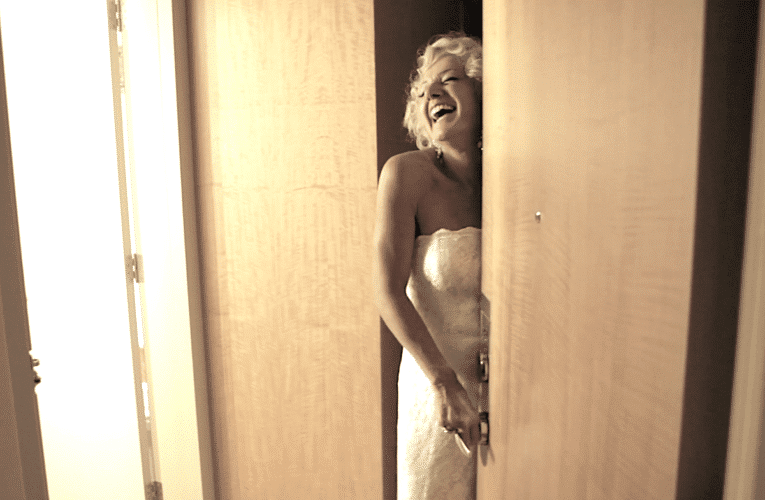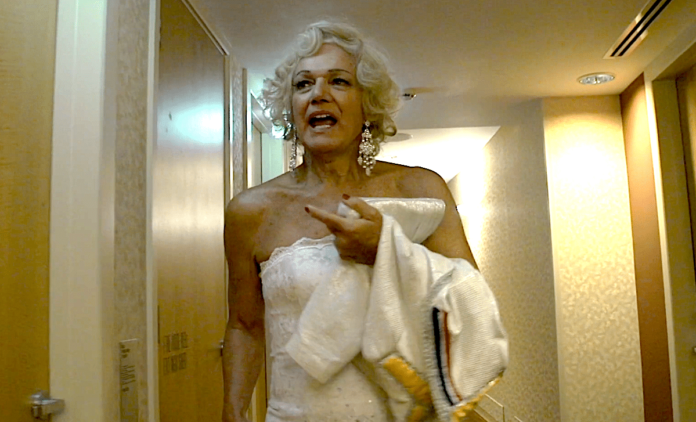“The suffering leads nowhere, circles in on itself,
feeds on itself. Drouyn’s transition only worsens his mental
health, and anyone still watching at this point is just
rubbernecking.”
Peter Drouyn has many pages in Encyclopedia of
Surfing. His place in surfing is credited, accounted for,
saluted. So the plan was to let Drouyn be, EOS-wise.
My take is that for four decades now, more or less, Drouyn has
been travelling on rough mental health terrain—to which his splashy
gender transition in 2008 was all but incidental—and the fact that
we are periodically invited by Peter himself to follow along is not
in itself reason enough to keep watching.
What Drouyn needs, I think, what he has needed all this time, is
for us to go away.
But three weeks ago the Australian and New Zealand Film Archive
posted two beautifully restored Drouyn clips from Bob Evans’ 1968
film High on a Cool Wave (watch here and here) and I was again riveted, both reels, start to
finish, by Peter’s surfing. Moreover, the Florida Surf Film
Festival, this weekend, brought us the years-delayed American
premier of The Life and Death of Westerly
Windina, a full-length documentary on Drouyn, his
place in surfing, and his long and harrowing 360-degree venture
into gender identity.
As a FSFF board member I got a previewer screener to
Life and
Death, clicked away—and there I was, gawking like
everyone else, back inside the Drouyn house of mirrors. Because so
much of Drouyn’s life and career is slippery or contentious or
otherwise hard to pin down, let’s start with what is knowable and
provable.
Peter Drouyn was a surpassingly gifted surfer. Versatile,
progressive, captivating, more flair than any 10 people
combined—you could not take your eyes off him. From 1966 to 1972,
he belonged in the World’s Best conversation; had there been a
world tour in 1970 instead of a one-off world championship contest,
Drouyn would have beat Nat Young to the crown with room to spare.
He won Makaha and the
Aussie Titles that year, was runner-up at the Duke, third in the
World Championships, and fourth in the Smirnoff.
But never mind the results, watch those two Cool Wave
clips again, and also know that Drouyn crossed the
longboard-shortboard divide with style and power and panache fully
intact, and that for another few years he continued to ride at the
highest level in waves of every description. If nothing else,
Life and Death is a reminder that Drouyn’s center stage
spot in the surfing pantheon is deserved.
That said, we’ve never really been allowed to dwell on this
remarkable achievement because Drouyn is always ready to pop and
tell us that he was ripped off, done in by the media, the judges
(“those five idiots on the beach”), his surfing peers, anybody and
everybody, all conspiring against him out of jealousy or spite or
whatever else came to mind. Drouyn used to push this idea with
amazing freeform narcissism, including a 1997 Deep
magazine interview where he compares himself to Christ, Spartacus,
and Henri “Papillon”
Charrièe.
In recent years he’s made the same point but with martyred
soft-voiced resignation, and this is what we hear just a few
minutes into Life and Death, which means the gorgeous
surfing we see onscreen is already being shaped and fogged by
grievance. This sense of injustice drives the first part of the
film, in fact, and it is hard going—partly because there is some
truth to what Peter says, and partly because it is so obviously not
true. (I’m leaving aside the claim that Drouyn as a child was
molested by the local priest; Life and Death mentions this
and moves on and I’ll do the same, although it would seem to be a
headwater event Drouyn’s mental health issues.)
Drouyn at his peak was
overwhelmingly charismatic, funny and articulate, and
young-Brando-level handsome. He was also full of
himself, quick to anger, nearly impossible to get along with for
any length of time. He put people off as much as he entertained and
charmed them.
For that reason, Drouyn may have got less attention, less
plaudits, less titles, than he otherwise would have.
But how much less, really?
Peter lost close heats to questionable judging—like every other
marquee surfer throughout history. He for sure didn’t get as many
surf mag covers as Nat Young. On the other hand, he was interviewed
and profiled, well-sponsored, and featured in all the Aussie-made
surf movies. Surf-media kingpin Bob Evans was so fascinated by
Peter that in 1974 he made Drouyn and Friends, the
original surfing biopic. It is very much true that Nat Young and
Wayne Lynch and Bob McTavish took up more than their share of
surf-world oxygen from the mid- ’60s to the early ’70s, and some of
that oxygen rightfully belonged to Peter.
But he outlasted everybody in terms of keeping our attention as
a progressive surfer. He was voted into the Australian Surfing Hall
of Fame after Young and Lynch but before McTavish—and before
Michael Peterson, Terry Fitz, Pam Burridge, on and on.
He was never ignored. Just the opposite. All things considered,
Drouyn is among the most-talked-about, least-ignored surfers of all
time.
But in Life and Death, Drouyn and the filmmakers are
clearly hot for injustice. The biggest ripoff of all, we learn, is
that Peter was rated #2 near the finish of the 1977 season
(the same year he directed the
Stubbies event at Burleigh and brought man-on-man surfing to the
world tour), but was denied a start in the
season-ending Duke contest, and thus missed his last and best
chance at a world title.
Again, this is true and not-true.
Drouyn did not get a Duke invite because the CT at the time was
a mess and the starting field for many events was picked not by
ratings but by whatever banged-up method contest organizers chose.
Peter hadn’t competed in Hawaii the previous few years; he
therefore didn’t make the Duke cut.
But the point is moot.
The Duke was not the final contest of the year (two more
followed) and even if Drouyn had been invited and won, he would not
have taken the ’77 title off winner Shaun Tomson, not even close.
This is not hidden information. The spreadsheets are out there.
Nevertheless, according to Life and Death, the Duke
contest was the knock-out punch, the event that “took Peter’s heart
and soul away,” and from there we slide into the second part of the
the film, and there will be spoiler alerts below, so stop reading
if Life and Death is on your streaming watchlist.
Like I said, the first part of the film is hard going. But it is
a Sunday morning cartoon compared to what’s next—the failed careers
(actor, lawyer), the dead-end jobs (car salesmen, surf instructor,
cab driver), and half-baked DOA unicorn plans (coach the Chinese to surfing
greatness, build a $100,000,000 “wave stadium,” sell
shares to “Drouyn Island” in the Philippines).
Peter lived with his parents, lived in a halfway house, lived in
his car. In 1989, at age 40, he flew to South Africa, rented a
suite in a Durban hotel, took an ad out in the paper to announce a
“casting” for a “well-groomed female beauty of any race” to be his
wife. Fifty women showed up, Drouyn flew home with the “winner” and
fathered a son before the marriage collapsed.
At some point, around 2007, when Drouyn was in his late 50s, he
was “amorously involved” with a teenaged girl and was hit with a
restraining—and come on, at this point what are we even doing here?
How is it possible that we have not, all of us, apart from close
friends, family, and possibly the Queensland court system, simply
turned away? Drouyn’s lawyer tells us that “it was pretty soon
[after that] when Westerly appeared on the scene.”
I’ll finish up with just a couple of thoughts. The Life and
Death sequence where Peter-Westerly flies to Thailand in 2013
for his strip-mall gender reassignment surgery is long,
voyeuristic, and brutal. It’s not the explicit tight-focus
unfiltered human suffering, per se. It’s that the suffering leads
nowhere, circles in on itself, feeds on itself.
Drouyn’s transition only worsens his mental health, and anyone
still watching at this point is just rubbernecking.
There is a glittery sequence here, filmed at the 2013 Surfing
Australia’s Hall of Fame Awards, with cameras and crowds and red
carpet, and Westerly cosplaying as Marylin Monroe. This is supposed
to come off as a rebirth for Peter-Westerly—but in unguarded
moments her smile cuts out, she looks like a sad, scared, caged
animal, and to me this bit it is just as grim and downbeat as all
that preceded it.
After the banquet, Westerly stops at her hotel room door, turns,
bats her eyes at the camera and vampishly whispers goodnight in her
best Some Like it Hot voice before disappearing inside.
The screen finally, mercifully, goes black for a few moments.

Jump forward three years. Westerly Windina has detransitioned
back to Peter Drouyn. This closing section of Life and
Death, a brief epilogue, with Drouyn paunchy and slowed down,
walking down the block to a streetfront patch of grass where he
feeds cheese to the local birds, is almost woozy in its
strangeness—but calming, too.
It is also radically out of synch with the rest of the film.
We learn almost nothing about what took place in the years
following the awards banquet. My guess is we’re meant to feel
relief that Drouyn is alive and more or less at peace. And we do.
Because there is hardly a moment in the film, or at least the back
two-thirds, where you can’t imagine Drouyn-Westerly going home and
dropping the curtain once and for all.
So what happened?
How did Drouyn, after decades of riding out a convoy of
likely-never-diagnosed mental issues—line ’em up; mania,
depression, anxiety, grandiose narcissism, two or three
dissociative disorders—finally level out?
Drouyn tells us, near the end of the film, that “Westerly saved
my life,” but leaves it at that. There’s an interview online with
one of the Life and Death directors who says something
like the “audience will come to their own conclusion” about what
they’ve just seen, and about the meaning of Drouyn’s journey.
My conclusion, and I’ll bet a year’s salary on it, is Peter
Drouyn is alive today because he finally steered himself, or was
steered, to the right doctors, who prescribed the right meds.
I would further bet that this outcome, as miraculous in its own
way as it is common, is so unspectacular, so lacking in flair, so
totally the opposite of Drouyn’s operatic purple-on-purple life to
this point, that he or the filmmakers (or both) cannot bring
themselves to tell us.
But come on. Dare to be boring. More therapy and Zoloft. Less
Marylin and Brando.
There are many ways to transition.





